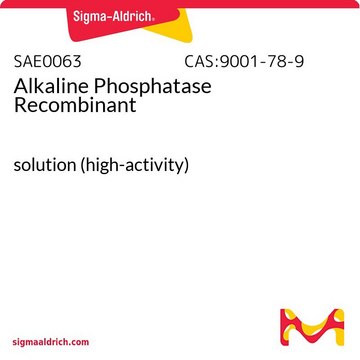SAE0111
Phosphatase, Alkaline from human placenta
≥10 units/mg solid (in glycine buffer)
Sinónimos:
Phosphatase, Alkaline from human placenta, Orthophosphoric-monoester phosphohydrolase (alkaline optimum)
About This Item
Productos recomendados
biological source
human placenta
specific activity
≥10 units/mg solid (in glycine buffer)
UniProt accession no.
storage temp.
−20°C
Gene Information
human ... ALPP(250)
¿Está buscando productos similares? Visita Guía de comparación de productos
Application
Biochem/physiol Actions
Unit Definition
signalword
Danger
hcodes
pcodes
Hazard Classifications
Resp. Sens. 1
Storage Class
11 - Combustible Solids
wgk_germany
WGK 1
flash_point_f
Not applicable
flash_point_c
Not applicable
Certificados de análisis (COA)
Busque Certificados de análisis (COA) introduciendo el número de lote del producto. Los números de lote se encuentran en la etiqueta del producto después de las palabras «Lot» o «Batch»
¿Ya tiene este producto?
Encuentre la documentación para los productos que ha comprado recientemente en la Biblioteca de documentos.
Nuestro equipo de científicos tiene experiencia en todas las áreas de investigación: Ciencias de la vida, Ciencia de los materiales, Síntesis química, Cromatografía, Analítica y muchas otras.
Póngase en contacto con el Servicio técnico





